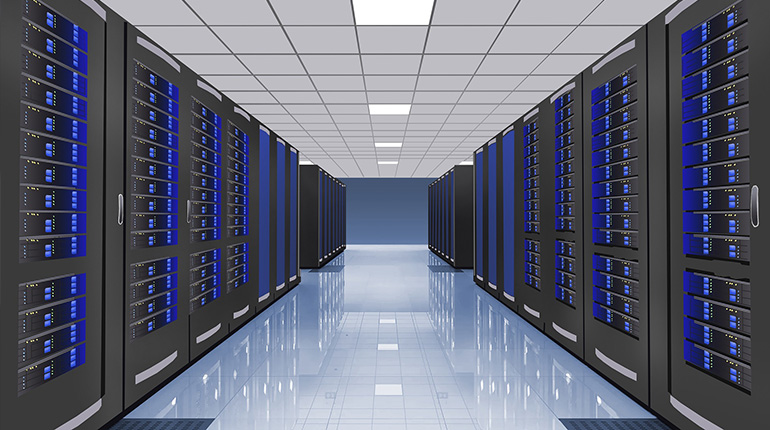Data centers changed significantly with the rise of Software-Defined Data Centers (SDDC). This approach gained popularity quickly for revolutionizing data center resource management and deployment. In this blog, we will examine the concept of SDDC and its impact on the data center industry.
What is a Software-Defined Data Center?
In a Software-Defined Data Center (SDDC), all infrastructure elements are virtualized and delivered as a service. This includes networking, storage, CPU, and security. This means that instead of relying on traditional hardware-based systems, SDDCs use software-defined infrastructure. The approach creates a fully virtualized data center environment. Also, it allows for greater flexibility, scalability, and automation in managing and provisioning resources.
The Transformative Journey of SDDC
The concept of Software-Defined Data Centers emerged in response to the limitations of traditional data centers. Traditional data centers struggled to keep up with the rapid pace of technological advancements. Scaling and managing resources was a time-consuming and complex process. This led to inefficiencies, excessive costs, and difficulty in adapting to changing business needs.
However, the rise of SDDCs revolutionized data center management by offering a more agile and efficient solution. By virtualizing all infrastructure elements, you can manage and scale SDDCs easily to meet your organization’s changing demands. This results in a more streamlined and cost-effective approach to data center management.
Key Components of Software-Defined Data Center
With its focus on virtualization and software-defined infrastructure, three key components make up an SDDC:
1. Virtualization
Virtualization lies at the heart of SDDC. It enables the abstraction of compute, storage, and networking resources from the underlying hardware. This approach enhances resource utilization and flexibility. Also, it allows you to provision, scale, and migrate virtual machines (VMs) dynamically based on workload demands.
2. Software-Defined Networking (SDN)
SDN is another crucial component of SDDC. It abstracts network functionality from the physical hardware and centralizes control through software-based controllers. This enables agile network management, efficient traffic routing, and policy implementation based on application needs.
3. Software-Defined Storage (SDS)
SDS decouples storage management and provisioning from the underlying hardware. This allows for greater scalability, performance, and cost-effectiveness. By pooling and abstracting storage resources, SDS enables dynamic allocation and management of storage capacity across the data center.
4. Automation and Orchestration
Automation and orchestration play a vital role in SDDC. They automate routine tasks and orchestrate the provisioning, configuration, and management of resources across the data center. This improves efficiency, reduces human errors, and speeds up service deployment.
Benefits of SDDC
The composable and agile nature of SDDCs offers a range of benefits for organizations, including:
- Flexibility and Scalability: SDDC offers unparalleled flexibility and scalability. It allows businesses to adapt to changing workload demands rapidly and scale their infrastructure up or down as needed.
- Cost Efficiency: By abstracting hardware and leveraging virtualization, SDDC boosts resource utilization and cost optimization. This leads to significant cost savings over traditional data center architectures.
- Improved Agility: With automated provisioning and orchestration capabilities, SDDC enables faster deployment of applications and services. This reduces time-to-market and enhances business agility.
- Enhanced Security: SDDC provides advanced security features such as micro-segmentation, encryption, and policy-based access control. It helps businesses strengthen their security posture and protect sensitive data.
- Simplified Management: By centralizing management and automation, SDDC simplifies data center operations, reduces complexity, and improves overall manageability.
The Impact of SDDC on Cloud Computing
SDDC played a pivotal role in the development and growth of cloud computing. With its virtualized, software-defined infrastructure, SDDCs became the foundation for many public and private clouds. The flexibility and scalability of SDDCs enable businesses to build and manage their private cloud environments. They can also leverage public cloud services with ease.
Moreover, SDDC enables the concept of the Hybrid Cloud. This combines private and public cloud environments to provide a unified infrastructure for managing workloads across both platforms. The hybrid approach allows businesses to benefit from the best of both worlds. They get the control and security of a private cloud while enjoying the scalability and cost-effectiveness of a public cloud.
The Growing Importance of SDDC
As businesses embrace digital transformation and cloud-native technologies, they increasingly demand agile, scalable, and efficient infrastructure solutions like SDDC. This enables businesses to modernize their data centers. Also, it serves as a foundation for emerging technologies such as edge computing, hybrid cloud, and containerization.
The COVID-19 pandemic accelerated remote work and digital collaboration. This shift drives the need for resilient and agile infrastructure to support distributed workloads and ensure business continuity. In this context, SDDC emerges as a strategic imperative for businesses looking to stay competitive in today’s fast-paced digital economy.
Conclusion
The rise of the Software-Defined Data Center (SDDC) represents a change in basic assumptions in data center architecture. It offers unparalleled flexibility, scalability, and efficiency to modern enterprises. By decoupling hardware from software and embracing virtualization, automation, and orchestration, SDDC helps businesses optimize their infrastructure. Moreover, it streamlines operations and accelerates innovation. As the digital landscape evolves, SDDC will be crucial for business success in digital transformation.
Looking to modernize your data center and harness the power of SDDC? Contact us today to learn more about our comprehensive suite of solutions and services. Email [email protected] or call 949-223-9240.

